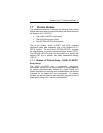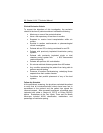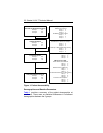
18 Stratos LV/LV-T Technical Manual
• Patients assigned to Group 1 received biventricular
pacing with CLS-based rate adaptive pacing using
BIOTRONIK’s Protos DR/CLS, which is a dual-chamber
pulse generator with CLS-based rate adaptive pacing.
During this study, the Protos DR/CLS devices were
implanted with two ventricular leads: the right ventricular
lead was connected to the ventricular port, and the left
ventricular lead was connected to the atrial port. Protos
DR/CLS was included in this study to evaluate
biventricular pacing with a different type of rate adaptive
sensor technology.
• Patients assigned to Group 2 received biventricular
pacing with accelerometer-based rate adaptive pacing
using the Stratos LV.
• Patients assigned to Group 3 (control group) received
right ventricular pacing with accelerometer-based rate
adaptive pacing using the Stratos LV. Therefore, 60% of
the patients received a Stratos LV device.
Primarily, the study evaluated and compared the functional
benefits of CRT between the three randomized groups using a
composite endpoint consisting of a six-minute walk test (meters
walked) and quality of life measurement (assessed using the
Minnesota Living with Heart Failure Questionnaire). Relevant
measurements were completed twice for each patient: once at
the Baseline evaluation (prior to implant and ablation) and again
at a six-month follow-up evaluation. The data collected during
this clinical study was used to demonstrate superiority of CRT to
RV only pacing. This study also evaluated the safety of both the
Protos DR/CLS and Stratos LV devices through an analysis of
the complication-free rate through six months. Secondarily, the
study also evaluated the superiority of CRT with CLS rate
adaptation compared to CRT with accelerometer rate adaptation.


















